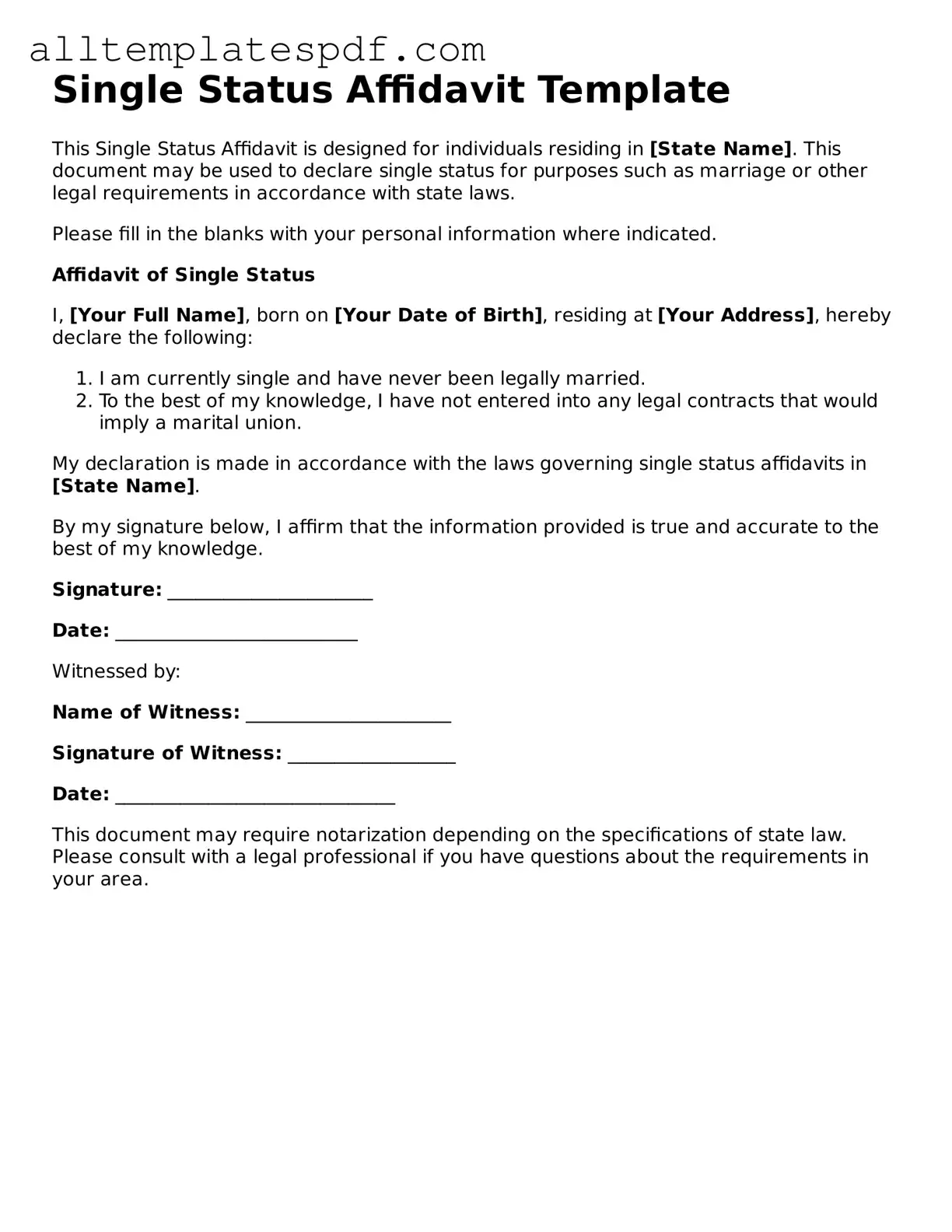Filling out the Single Status Affidavit form can be a straightforward process, but many individuals make common mistakes that can lead to delays or complications. One frequent error is providing incorrect personal information. This includes misspellings of names, wrong dates of birth, or inaccurate addresses. Such inaccuracies can result in the form being rejected or returned for corrections.
Another mistake involves not signing the affidavit. The form often requires a signature to validate the information provided. Omitting this crucial step can lead to the form being deemed incomplete, thus hindering the intended purpose of the affidavit.
Some people fail to check the requirements of the jurisdiction where the affidavit will be submitted. Different states or countries may have specific rules regarding the form. Ignoring these requirements can result in the form not being accepted, necessitating a resubmission.
Additionally, individuals may overlook the need for notarization. Many jurisdictions require that the affidavit be notarized to confirm the identity of the signer. Neglecting this step can cause delays in processing the affidavit.
Inaccurate statements about marital status can also pose a problem. It is essential to provide truthful and precise information regarding one's single status. Misrepresentations can lead to legal issues and undermine the affidavit's credibility.
Some individuals forget to include supporting documentation. Depending on the jurisdiction, additional documents may be necessary to substantiate the claims made in the affidavit. Failing to provide these can result in a request for further information.
Another common error is not reviewing the form before submission. Taking the time to carefully read through the completed affidavit can help catch mistakes or omissions that may have been overlooked initially.
Finally, people often miss deadlines for submitting the affidavit. Each jurisdiction may have specific timelines that must be adhered to. Missing these deadlines can lead to complications in legal proceedings or other matters that depend on the affidavit.
